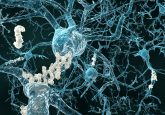Could fingolimod be repurposed for Huntington’s disease?

Huntington’s disease (HD) is a hereditary neurodegenerative disorder characterized by a triad of motor, psychiatric and cognitive symptoms. It is usually manifested between 30–50 years of age, with an estimated prevalence of 10 per 100,000 inhabitants in Europe. HD is caused by a CAG repeat expansion in the huntingtin gene (HTT) that translates to a repeat of polyglutamines, resulting in the formation of aggregates of the mutant protein within the cell. Although huntingtin is expressed throughout the brain, the pathology is most prominent in the striatum, cortex and, as evidenced more recently, in the hippocampus [1, 2]. The gradual deterioration...





